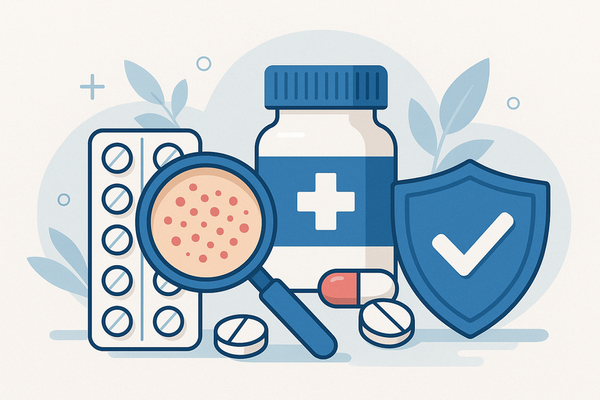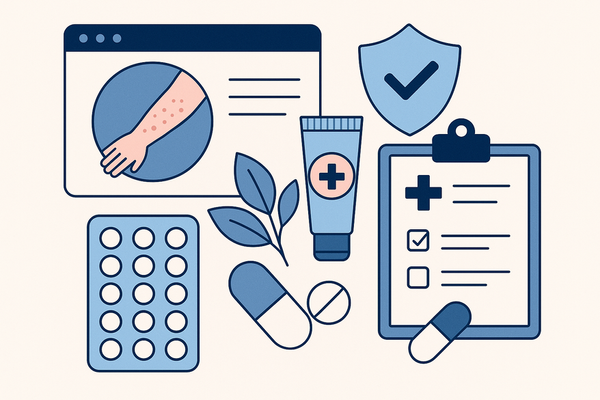Free vs Paid Rash Detector App: Best Value and Accuracy
Discover which offers the best value and accuracy: free vs paid rash detector apps. Compare costs, features, and user feedback to choose the right tool.

Estimated reading time: 8 minutes
Key Takeaways
- Accessibility vs. Precision: Free apps offer instant self-checks, while paid options deliver deeper diagnostics and expert access.
- Cost Considerations: Hidden ad costs in free tools can add up; subscriptions often pay for themselves by avoiding expensive visits.
- Data Privacy: Paid tiers usually guarantee HIPAA/GDPR compliance and encrypted storage, reducing risk of data-sharing.
- User Satisfaction: Paid users report higher confidence and faster expert support; free users appreciate no-cost entry points.
Table of Contents
- Introduction
- What Are Rash Detector Apps?
- Free vs Paid Options Overview
- Key Differences Between Free and Paid Apps
- Cost-Effectiveness Analysis
- User Experience and Feedback
- Considerations Before Choosing
- Conclusion and Recommendations
- FAQ
Introduction
Free vs paid rash detector apps represent an exciting frontier in digital healthcare. These AI-powered tools analyze photos of skin rashes, compare them against vast dermatology libraries, and suggest possible conditions—all from your smartphone. In this article, we weigh features, accuracy, user feedback, and privacy to help you choose the right tool.
One example is Rash Detector, which uses advanced AI to analyze rash photos and deliver an instant, easy-to-read sample report.

What Are Rash Detector Apps?
Rash detector apps leverage computer vision and machine learning to identify skin conditions. After training on hundreds of thousands of clinical images, they learn to spot changes in color, shape, and texture. The workflow typically involves:
- User takes or uploads a clear photo of a rash.
- App processes the image on-device or in the cloud.
- AI model compares the photo to its training dataset.
- App returns probable conditions or next-step advice.
Free vs Paid Options Overview
Free Rash Detector Apps
- SkinVision
- DermCheck
- WhichDerm (Android only)
Core features:
- Basic photo-based rash analysis
- Guided symptom checker
- Educational FAQs on common skin issues
- Local image processing for privacy control
Limitations:
- Limited condition database
- Infrequent AI updates
- In-app ads or data-sharing for revenue
Learn more on Torrino Medica.
Paid Rash Detector Apps
- Rash ID (Apple App Store)
- Premium tiers of SkinVision
Premium features:
- In-depth diagnostic reports with risk levels
- Full libraries of hundreds of skin conditions
- Tele-dermatology chat and video consults
- Ongoing symptom tracking and history logs
Discover Rash ID on the App Store.
Key Differences Between Free and Paid Apps
- Diagnostic Accuracy: Free apps scan limited datasets; paid versions train on extensive clinical images, reducing false positives.
- Database Size: Free tools cover common rashes; paid apps list hundreds of conditions, from fungal infections to rare autoimmune disorders.
- Expert Access: Only premium tiers include live chat or video calls with licensed dermatologists for urgent cases.
- Educational Content: Free platforms offer general tips; paid services deliver personalized prevention strategies and follow-up plans.
- Data Privacy & Compliance: Paid apps adhere to HIPAA/GDPR and encrypt data end-to-end; free versions may share anonymized data for ads.
- Update Frequency: Paid subscribers receive priority AI retraining and feature rollouts aligned with the latest research.
- Customer Support: Free users rely on email tickets or bots; paid members access dedicated support lines and 24/7 live chat.
Cost-Effectiveness Analysis
Selecting between free vs paid rash detector apps involves weighing upfront costs against potential long-term savings and convenience.
- Free: No up-front fee; revenue from ads or in-app purchases.
- One-time Purchase: $2–$20 for full feature access.
- Monthly Subscription: $5–$15 per month.
- Annual Plan: $50–$100 per year.
Hidden costs in free apps: intrusive ads, mini-purchases for extra scans, and potential privacy trade-offs.
Example equation:
Subscription cost = $5/month = $60/year
Typical dermatologist visit = $150
Breakeven point ≈ 2.5 years
User Experience and Feedback
Real user reviews underscore strengths and pain points of each tier.
- Free apps (3.5–4 stars): Praised for ease of use; criticized for ads and occasional misdiagnoses.
- Paid apps (4.2–4.8 stars): Valued for accuracy, detailed reports, and expert access.
Paraphrased quotes:
- “The free version helped me rule out allergies, but ads were annoying.”
- “Premium chat gave me clarity on my eczema flare within an hour.”
- “I upgrade because the paid app caught an early fungal rash.”
Considerations Before Choosing
- Budget Constraints: Start with free tools like SkinVision or DermCheck if cost is a concern.
- Frequency of Use: Occasional self-checks suit free apps; chronic cases may justify subscriptions for history tracking.
- Need for Precision: High-risk or unclear rashes benefit from larger databases and expert consults in paid apps.
- Privacy Priorities: Choose paid tiers offering HIPAA/GDPR compliance and encrypted storage for sensitive data.
Conclusion and Recommendations
Free apps excel at providing no-cost, on-demand rash checks. Paid options deliver enhanced accuracy, tele-dermatology, and robust privacy safeguards. Together, they democratize access to skin health insights.
Recommendation: Try a trusted free app to test accuracy and usability. If you face recurrent or complex rashes, upgrade to a paid tier—its advanced reports and expert support often justify the subscription cost.
FAQ
- Are free rash detector apps reliable?
They offer basic guidance and can flag common issues, but may miss rare or subtle conditions due to limited datasets. - Is my photo data safe?
Free apps may share anonymized data for ads; paid tiers usually guarantee encryption and compliance with HIPAA/GDPR. - When should I see a dermatologist?
If the app flags high-risk conditions or symptoms persist despite self-care, seek professional medical advice promptly.





